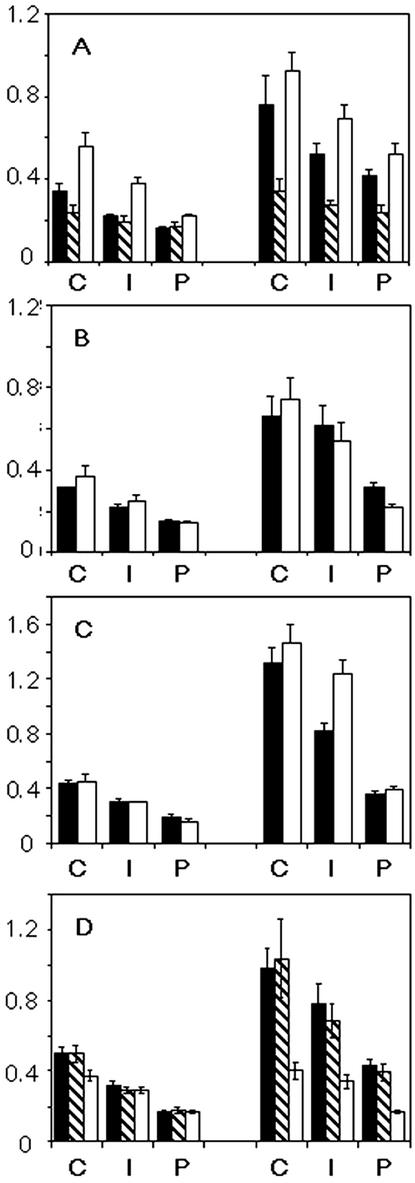Figure 2.
Widths of growth rings in starch granules. Growth ring width was calculated for the proximal (end closer to the hilum) and distal ends of the granule by measuring the distance from the innermost visible ring to the periphery perpendicular to the curve of the growth rings. The distance was divided into three equal segments: center (C), intermediate (I), and periphery (P). The number of rings in each segment was counted and the average ring width (micrometers, shown on the y-axis) was calculated. Measurements were conducted on 10 granules from each sample, and bars show ses. A, Comparison of granules from tubers of plants grown under a normal 16-h light/8-h dark regime (black bars), from microtubers grown in constant conditions (shaded bars), and from tubers of plants grown under a 20-h light/20-h dark regime (white bars). B, Comparison of granules from transgenic plants with reduced cytosolic FBPase activity (white bars), and control plants with normal FBPase grown under the same conditions at the same time (black bars). C, Comparison of granules from transgenic plants with reduced SPS activity (white bars), and control plants with normal SPS grown under the same conditions at the same time (black bars). D, Comparison of granules from untransformed plants (black bars), transgenic plants with reduced granule-bound starch synthase (GBSS) activity (shaded bars), and transgenic plants with reduced activity of GBSS and SSIII (white bars).

